Catalogue > List by artist
Browse the entire list of Rencontre Internationales artists since 2004. Use the alphabetical filter to refine your search. update in progress
Rosa Barba
Catalogue : 2018From Source to Poem | Experimental film | 35mm | color | 12:0 | Italy, Germany | 2016
Rosa Barba
From Source to Poem
Experimental film | 35mm | color | 12:0 | Italy, Germany | 2016
"From Source to Poem" is an invitation to think about the spaces in which history and cultural production is preserved in order to be passed on to future generations. On the one hand, it pursues Barba’s research initiated with "The Hidden Conference" (2010-2015) “a three-part film work exploring museum storages and whose title refers to imaginary conversations taking place between artworks inside these invisible spaces” on the other hand, it is a reflection about the obsession of preserving any output of western culture in any possible medium. "From Source to Poem" shifts the focus from artworks into archival storage: Shot at the National Audio-Visual Conservation Center of the Library of Congress in Culpeper, Virginia, and at an enormous solar power plant in the Mojave Desert in California, it juxtaposes images from the largest media archive worldwide with a study of rhythm, and images of cultural with those of industrial production. The film exposes the preservation of cultural outputs, but also their digitisation for the future. A vast number of the archive’s holdings are sound material; a sonic memory which is recovered and mixed in the soundtrack as a mean to set in motion otherwise unlikely dialogues. Filmed and screened on 35mm film, the work itself is preserved in one of the most durable archival forms.
Rosa Barba’s work is a subtle interrogation into and co-option of industrial cinema-as-subject, via various kinds of what might be understood as “stagings”—of “the local,” the non-actor, gesture, genre, information, expertise and authority, the mundane—and removals from a social realism within which they were observed, and which qualifies them as components of the work, to be framed, redesigned, represented. The effect of which her work contests and recasts truth and fiction, myth and reality, metaphor and material to a disorientating degree, which ultimately extends into a conceptual practice that also recasts the viewer’s own staging as an act of radical and exhilarating reversal – from being the receiver of an image (a subject of control) to being in and amongst its engine room/s, looking out. (Ian White)
Rosa Barba
Catalogue : 2020Aggregate States of Matters | Experimental doc. | 4k | color | 21:22 | Italy | 2019
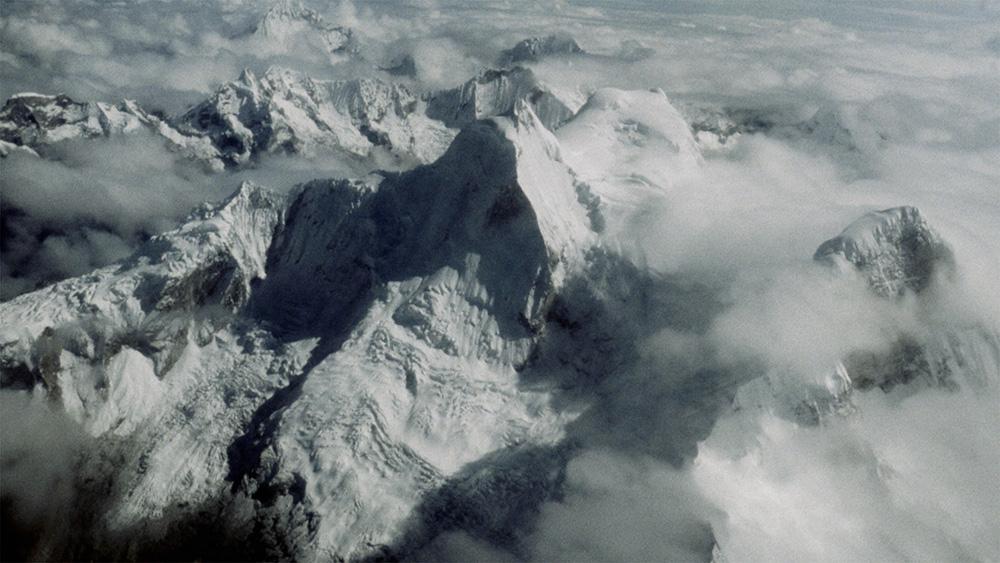
Rosa Barba
Aggregate States of Matters
Experimental doc. | 4k | color | 21:22 | Italy | 2019
Aggregate States of Matters Rosa Barba 18' Bright Future Ammodo Tiger Short Competition Aggregate States of Matters highlights the ambiguous relationship between humans and nature. For her new 35mm film shot in Peru, Rosa Barba worked with communities that are affected by the melting of a glacier and geological time becoming exposed. Barba shows the slow disappearance of the glacier and the perception of this fact within the Quechuan population in the Andes. While exploring different local myths, she outlines the possibility of translating ancient knowledge into the present time.
Rosa Barba (b. 1972 in Italy) lives and works in Berlin. Rosa Barba studied at the Academy of Media Arts in Cologne and at the Rijksakademie van Beeldende Kunsten in Amsterdam. Barba’s work is represented in numerous international collections such as Collezione MAXXI Arte, Rome, Italy; Collezione FRAC Piemonte, Vercelli, Italy; Hamburger Bahnhof, Berlin; Lemaître Collection, London; Louisiana Museum of Modern Art, Humlebæk, Denmark; Museo di arte moderna e contemporanea di Trento e Rovereto, Rovereto; Museo Centro de Arte Reina Sofía, Madrid, Kunsthaus Zürich, MACBA Barcelona, Mambo Bologna, Sammlung zeitgenössischer Kunst der Bundesrepublik Deutschland Germany and Jumex, Mexico City. She has participated in group shows amongst others at MASS MoCA, USA; Akademie der Künste, Berlin; Kunstmuseum Liechtenstein, Vaduz; La Cinémathèque Française, Paris; WIELS, Brussels; Museo Nacional Centro de Arte Reina Sofia, Madrid; Swiss Institute, New York; 8th Berlin Biennale for Contemporary Art International Triennial of New Media Art 2014, Beijing, China; 19th Biennale of Sydney; International Biennial of Contemporary Art of Cartagena de Indias, Colombia; 2010 Liverpool Biennial; 52nd and 53rd Venice Biennale; 2nd Thessaloniki Biennale of Contemporary Art; Biennial of Moving Images, Geneva.
Rosa Barba
Catalogue : 2022Inside the Outset: Evoking a Space of Passage | Experimental film | 35mm | color | 0:0 | Italy, Cyprus | 2021
Rosa Barba
Inside the Outset: Evoking a Space of Passage
Experimental film | 35mm | color | 0:0 | Italy, Cyprus | 2021
Inside the Outset: Evoking a Space of Passage is a project by artist and filmmaker Rosa Barba following an invitation by Point Centre for Contemporary Art in Nicosia and curator Mirjam Varadinis to propose and realize a project in Cyprus. The work proposed by the artist in 2013, started in 2014 and consists of two parts: a film and a long-term open-air cinema installation. The project was then presented to the Italian Council and received the first prize at the international competition (Third Edition) in 2018, and was awarded a grant from DGAAP (Directorate General for Contemporary Art and Architecture and Urban Peripheries), Italy. Barba’s film is exclusively shot in Cyprus, including underwater shots of the Mazotos shipwreck, as well as aerial shots from archaeological sites. It is an investigation into the loaded, transforming topography that is already palpable in the landscape, before we actually understand what language it creates for our society. In that, the film follows Barba’s artistic approach to examine liminal states which manifest in between contested spaces, both mentally and geographically, in order to allow for a new perspective. The inaugural screening took place in Autumn 2021 at the open-air cinema installation in the Buffer Zone.
Rosa Barba (b. 1972 in Italy) lives and works in Berlin. Rosa Barba studied at the Academy of Media Arts in Cologne and at the Rijksakademie van Beeldende Kunsten in Amsterdam. Barba’s work is represented in numerous international collections such as Collezione MAXXI Arte, Rome, Italy; Collezione FRAC Piemonte, Vercelli, Italy; Hamburger Bahnhof, Berlin; Lemaître Collection, London; Louisiana Museum of Modern Art, Humlebæk, Denmark; Museo di arte moderna e contemporanea di Trento e Rovereto, Rovereto; Museo Centro de Arte Reina Sofía, Madrid, Kunsthaus Zürich, MACBA Barcelona, Mambo Bologna, Sammlung zeitgenössischer Kunst der Bundesrepublik Deutschland Germany and Jumex, Mexico City. She has participated in group shows amongst others at MASS MoCA, USA; Akademie der Künste, Berlin; Kunstmuseum Liechtenstein, Vaduz; La Cinémathèque Française, Paris; WIELS, Brussels; Museo Nacional Centro de Arte Reina Sofia, Madrid; Swiss Institute, New York; 8th Berlin Biennale for Contemporary Art International Triennial of New Media Art 2014, Beijing, China; 19th Biennale of Sydney; International Biennial of Contemporary Art of Cartagena de Indias, Colombia; 2010 Liverpool Biennial; 52nd and 53rd Venice Biennale; 2nd Thessaloniki Biennale of Contemporary Art; Biennial of Moving Images, Geneva.
Maddi Barber, June Crespo
Catalogue : 2025Cambium | Experimental doc. | 16mm | color | 44:30 | Spain | 2024
Maddi Barber, Marina Lameiro
Cambium
Experimental doc. | 16mm | color | 44:30 | Spain | 2024
CAMBIUM, the cellular stratum of trees, it’s a cambial membrane that runs along the trunk and roots, producing growth. In the Navarrese Pyrenees a community has decided to cut down a pine forest in order to recover ancient fields for cultivation and animal grazing. Structured in two parts, the film traces the change of a territory traversed by practices of violence and care for the land.After the abandonment of the villages during the 1960s in the Arce Valley, the Government of Franco planted pines in the fields that were used for grazing as part of a state programme of reforestation and forestry. More than 50 years later, in Lakabe, a village repopulated in the 1980s, they have decided to cut down the pines and recover their meadows for livestock. Through different data capture and image technologies, CAMBIUM explores, together with the inhabitants of the area, a territory in transformation.
Maddi Barber studied audiovisual communication at the University of the Basque Country and did a master's degree in visual anthropology at the University of Manchester. In 2019 she created the production company Pirenaika, with which she has produced some of her films as well as those of other artists and filmmakers from the nearby context such as Gerard Ortin, Ainhoa Gutiérrez and Irati Gorostidi. Her latest co-production, CONTADORES, by Irati Gorostidi, had its international premiere at the Semaine de la Critique in Cannes. She is currently participating in Tabakalera's Ikusmira Berriak residency, where she is developing the feature-length fiction film CLAROS DE BOSQUE. Marina Lameiro is a filmmaker and producer. She holds a degree in Audiovisual Communication from the URJC and a master's degree in Creative Documentary from IDEC-UPF and a postgraduate degree in Audiovisual Editing from the same university. She was part of the Collaborative Studio (CoLab) of UnionDocs in New York City as an artist-in-residence. In 2018 he released her first feature film YOUNG & BEAUTIFUL which, among other awards, won the Special Audience Award at the Punto de Vista Festival in 2018, was nominated for the Feroz Awards and has been screened in more than 20 countries. In 2021 she released DARDARA, her second feature film, which entered the list of the 10 most-seen films in cinemas after its premiere at the Punto de Vista Festival.
Catalogue : 2023CORE | Experimental film | mov | color | 21:22 | Spain | 2022
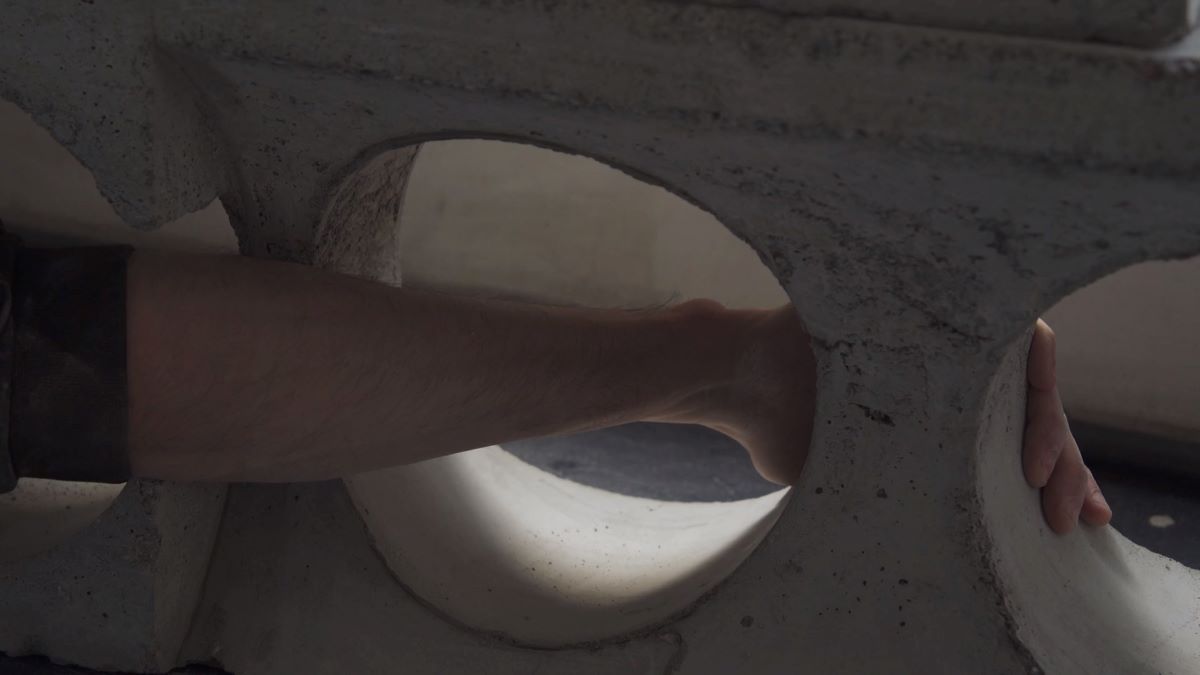
Maddi Barber, June Crespo
CORE
Experimental film | mov | color | 21:22 | Spain | 2022
Someone is sleeping. A conveyor belt moves stones in an underground place. The stones fall through a hole in the shape of a mouth. Some hands go through a piece of concrete. Someone operates a knob that crushes the stone. In CORE, we document the different states through which the material passes: stone, dust, liquid and solid. Moving between the surface of things and underneath them, we interweave two apparently distant processes: hands traversing and manipulating cement sculptures and the process of extracting and transforming stones in a quarry. An encounter and friction between materials that is in turn the result of the meeting and negotiation of two languages, the sculptural and the cinematographic.
JUNE BIO June Crespo (Pamplona 1982) graduated in Fine Arts from the University of the Basque Country in 2005 and participated in the De Ateliers residency programme (Amsterdam 2015-2017). Her solo exhibitions include: entre alguien y algo (2022) and Ser dos (2017) at CarrerasMugica gallery, Bilbao; Helmets (2020) at Artium, Vitoria-Gasteiz; Voy, sí (2020) Heinrich Ehrhardt gallery, Madrid and No Osso (2019) at Uma Certa Falta de Coêrencia, Oporto. She has recently participated in group exhibitions such as: The Milk of Dreams, Venice Biennale 2022; Fata Morgana, Jeu de Paume (Paris) or El sentido de la Escultura at the Miró Foundation (Barcelona). MADDI BIO Maddi Barber (Valle de Arce, 1988) has a degree in Audiovisual Communication and an MA in Visual Anthropology from the University of Manchester. Her work has been shown at festivals such as Visions du Réel, FidMarseille, San Sebastian (Zabaltegi), Curtocircuito, Zinebi, Ji.hlava, Porto Post Doc and Las Palmas, among others. They have also been exhibited in museums and centres such as La Panera, Artium and the Oteiza Museum. She is currently working on the development of his first feature film, "Claros de bosque".
Maddi Barber, Marina Lameiro
Catalogue : 2025Cambium | Experimental doc. | 16mm | color | 44:30 | Spain | 2024
Maddi Barber, Marina Lameiro
Cambium
Experimental doc. | 16mm | color | 44:30 | Spain | 2024
CAMBIUM, the cellular stratum of trees, it’s a cambial membrane that runs along the trunk and roots, producing growth. In the Navarrese Pyrenees a community has decided to cut down a pine forest in order to recover ancient fields for cultivation and animal grazing. Structured in two parts, the film traces the change of a territory traversed by practices of violence and care for the land.After the abandonment of the villages during the 1960s in the Arce Valley, the Government of Franco planted pines in the fields that were used for grazing as part of a state programme of reforestation and forestry. More than 50 years later, in Lakabe, a village repopulated in the 1980s, they have decided to cut down the pines and recover their meadows for livestock. Through different data capture and image technologies, CAMBIUM explores, together with the inhabitants of the area, a territory in transformation.
Maddi Barber studied audiovisual communication at the University of the Basque Country and did a master's degree in visual anthropology at the University of Manchester. In 2019 she created the production company Pirenaika, with which she has produced some of her films as well as those of other artists and filmmakers from the nearby context such as Gerard Ortin, Ainhoa Gutiérrez and Irati Gorostidi. Her latest co-production, CONTADORES, by Irati Gorostidi, had its international premiere at the Semaine de la Critique in Cannes. She is currently participating in Tabakalera's Ikusmira Berriak residency, where she is developing the feature-length fiction film CLAROS DE BOSQUE. Marina Lameiro is a filmmaker and producer. She holds a degree in Audiovisual Communication from the URJC and a master's degree in Creative Documentary from IDEC-UPF and a postgraduate degree in Audiovisual Editing from the same university. She was part of the Collaborative Studio (CoLab) of UnionDocs in New York City as an artist-in-residence. In 2018 he released her first feature film YOUNG & BEAUTIFUL which, among other awards, won the Special Audience Award at the Punto de Vista Festival in 2018, was nominated for the Feroz Awards and has been screened in more than 20 countries. In 2021 she released DARDARA, her second feature film, which entered the list of the 10 most-seen films in cinemas after its premiere at the Punto de Vista Festival.
Catalogue : 2023CORE | Experimental film | mov | color | 21:22 | Spain | 2022

Maddi Barber, June Crespo
CORE
Experimental film | mov | color | 21:22 | Spain | 2022
Someone is sleeping. A conveyor belt moves stones in an underground place. The stones fall through a hole in the shape of a mouth. Some hands go through a piece of concrete. Someone operates a knob that crushes the stone. In CORE, we document the different states through which the material passes: stone, dust, liquid and solid. Moving between the surface of things and underneath them, we interweave two apparently distant processes: hands traversing and manipulating cement sculptures and the process of extracting and transforming stones in a quarry. An encounter and friction between materials that is in turn the result of the meeting and negotiation of two languages, the sculptural and the cinematographic.
JUNE BIO June Crespo (Pamplona 1982) graduated in Fine Arts from the University of the Basque Country in 2005 and participated in the De Ateliers residency programme (Amsterdam 2015-2017). Her solo exhibitions include: entre alguien y algo (2022) and Ser dos (2017) at CarrerasMugica gallery, Bilbao; Helmets (2020) at Artium, Vitoria-Gasteiz; Voy, sí (2020) Heinrich Ehrhardt gallery, Madrid and No Osso (2019) at Uma Certa Falta de Coêrencia, Oporto. She has recently participated in group exhibitions such as: The Milk of Dreams, Venice Biennale 2022; Fata Morgana, Jeu de Paume (Paris) or El sentido de la Escultura at the Miró Foundation (Barcelona). MADDI BIO Maddi Barber (Valle de Arce, 1988) has a degree in Audiovisual Communication and an MA in Visual Anthropology from the University of Manchester. Her work has been shown at festivals such as Visions du Réel, FidMarseille, San Sebastian (Zabaltegi), Curtocircuito, Zinebi, Ji.hlava, Porto Post Doc and Las Palmas, among others. They have also been exhibited in museums and centres such as La Panera, Artium and the Oteiza Museum. She is currently working on the development of his first feature film, "Claros de bosque".
George Barber
Catalogue : 2006What's that sound? | Experimental video | dv | color | 4:0 | United Kingdom | 2004
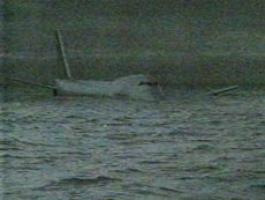
George Barber
What's that sound?
Experimental video | dv | color | 4:0 | United Kingdom | 2004
George Barber doffs his cap to the 20th anniversary of Scratch Video with What`s That Sound?, a mesmerizing montage of questions, answers, and the cries and screams of people caught in a disaster movie. The work uses as its starting point, the film Airport `77 where, improbably, a jumbo jet sinks to the bottom of the sea. What follows is a clever amalgamation of absurd linguistics, cries and shouts, highlighting the artist`s permanent fascination with speech, and human reaction to out-of-the-ordinary situations.
Courtesy Video Data bank
www.vdb.org
"What`s that Sound?" is a piece started in 1989 but not finished until 2004. The piece is a re-working of "Airport 77" disaster movie. The Artist focuses on a scene where the occupants of a plane, stranded at the bottom of the sea, are listening desperately for any signs of rescue. Vincent Price and Jack Lemmon star. Slowly a link is made between the audience listening - and those on the plane listening. We struggle like them to hear and are drawn in. The extraneous sounds of life start to become part of the work."
Courtesy www.luxonline.org
"George Barber was born in Guyana in 1958. He studied at St Martins and Slade Schools of Art, London. He was a founder member of ZG Magazine and a leading figure in the Scratch Video phenomenon of the 80s, which exploited newly available video-editing technologies and their potential for rhythmic-editing and moving-image collage. His current work is visually striking and sometimes disturbing, and often concerned with human behavior in unusual situations. He was once described by Art Monthly as, "The Henry Ford of independent video." Courtesy Video data bank
Nora Barbier
Catalogue : 2018Les Yeux bleus cheveux noirs | Experimental fiction | hdv | color | 14:31 | France | 2017
Nora Barbier
Les Yeux bleus cheveux noirs
Experimental fiction | hdv | color | 14:31 | France | 2017
Deux amis se filment dans Shanghai. Librement inspiré du livre éponyme de Marguerite Duras, Les Yeux bleus cheveux noirs est un film sur le regard,le désir : une lutte silencieuse dans laquelle la retenue l’emporte sur ce qui est livré.
Nora Barbier est née en 1988. Après des études en philosophie contemporaine (Philmaster ENS et EHESS) et en études de genre (M2 de l’Université Paris 8 Saint-Denis), elle a travaillé comme attachée de production de cinéma pour Capricci. Sa première exposition personnelle, Life is so Easy, a eu lieu au Bazaar Compatible Program à Shanghai en 2016.
Olivo Barbieri
Catalogue : 2008site specific_LAS VEGAS 05 | Experimental film | 35mm | color | 12:30 | Italy, Canada | 2005
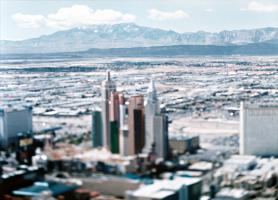
Olivo Barbieri
site specific_LAS VEGAS 05
Experimental film | 35mm | color | 12:30 | Italy, Canada | 2005
Las Vegas is the apotheosis of the desert town. Visiting Las Vegas in the mid-1960s was like visiting Rome in the late 1940s... "Learning from Las Vegas" Venturi, Brown, Izenour. The M.I.T. Press, 1972,1977. Thirty three years after the publication of Robert Venturi?s seminal treatise on architecture, ?Learning from Las Vegas?, how does the city of Las Vegas appear today? Las Vegas 1905-2005: one hundred years after it?s foundation, what form has Las Vegas, the most important city for tourism and mass entertainment in the world, seemingly impermeable to the various energy crises (petroleum, water, electricity) and terrorism which face the world today, taken? "site specific_LAS VEGAS 05" is an artistic project, a work in progress, the second stop of a voyage which involve, after Rome, Shanghai.
Olivo Barbieri (Italy 1954) begins to exhibit his work in 1978. Beginning in the year 1989, he regularly travels to Orient, in particular, to China. In 1993, 1995, and 1997, he takes part in the Biennial in Venice and in numerous other international events devoted to contemporary visual arts. In 1996, he holds a retrospective exhibit of his work at the Folkwang Museum in Essen. In 2003 he exibited in "Strangers" the first Triennial of photography and video organized by ICP (International Centre of Photography) New York. In 2003 start the project site specific_ who will involve several cities: Roma, Montreal, Amman, Las Vegas, Los Angeles, Shanghai, Sevilla, etc. For the site specific_ series he realized 3 films: site specific_ROMA 04, site specific_LAS VEGAS 05, site specific_SHANGHAI 04. In 2005 he started new series of film Seascape # e Riversacape #. In 2006 he was invited from BIACS (Sevilla Biennial) to realize a new film, Se villa → ( ∞ ) 06. Barbieri?s images may be viewed in museums, universities and art collections in Europe and USA. During the same period of time, several volumes on the artist?s his work are published: Paesaggi in Miniatura, Art& Udine 1991. Notte, Art&, Udine 1991. Olivo Barbieri seit 1978, Museum Folgwan, Essen 1996. Artificial Illuminations, Smithsonian, Washington, D.C., 1998. Virtual Truths, Silvana Editoriale, Milano 2001. Notsofareast, Donzelli, Roma 2002. Site Specific_Roma 04, Zoneattive, Roma 2004. Site Specific_Las Vegas 05, Wonder Inc., Toronto 2005, site specific_SHANGHAI 04, Editrice Quinlan, Bologna 2006, site specific_NYC 07, APM edizioni, 2007.
Rita Barbosa
Catalogue : 20232ª Pessoa | Video | 4k | color | 16:0 | Portugal | 2022
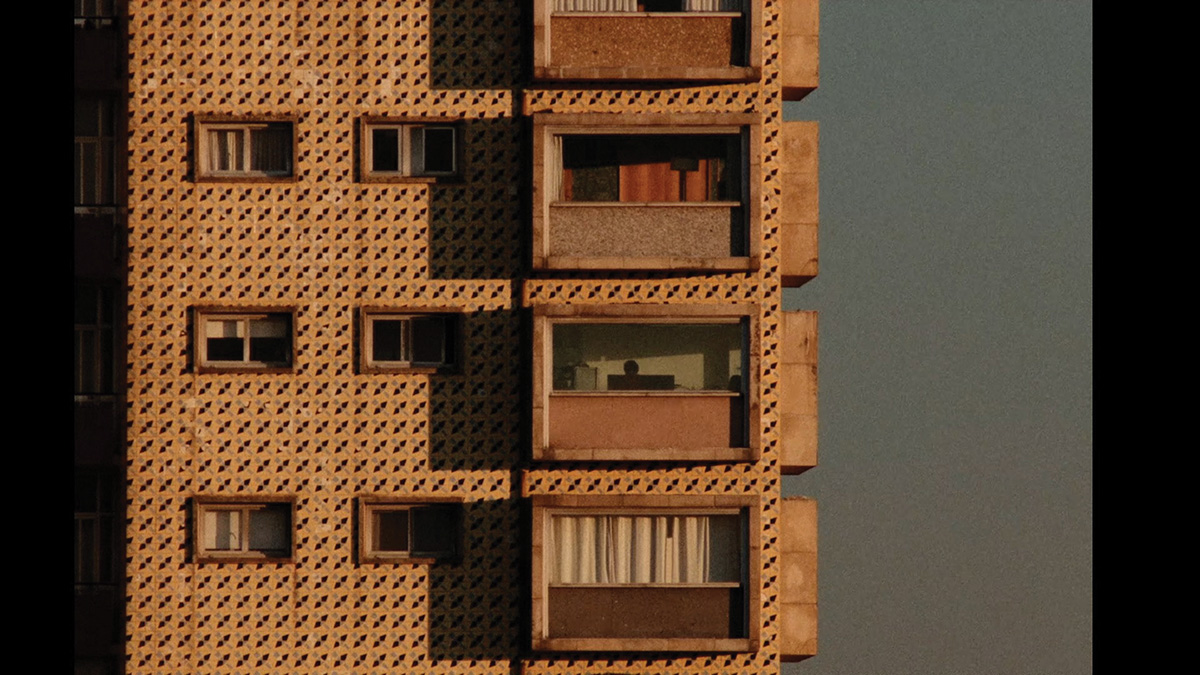
Rita Barbosa
2ª Pessoa
Video | 4k | color | 16:0 | Portugal | 2022
One day, an old water pipe caused a ceiling leak. On this ceiling, toxic mushrooms of the order Polyporales would grow. Sitting on the toilet, the lady of this house looks up and observes that magical and mysterious fungus, which is not an animal, nor a plant. The mushroom is the future, she thought.
1979. Graduated in Digital Arts, in Sound and Image Course, by the School of Arts of UCP (2002). She completed her training with courses and workshops such as the Maine Media Workshops Photography Management Workshop. She wrote and performed her first short film FRIENDS AFTER DARK [2016], that had it international premiere at the 69th Locarno Film Festival, and was screened at film festivals such as Curtas de Vila do Conde, Márgenes, Curtas de Verin, SACO - Oviedo Contemporary Audiovisual Week, FICA - Aguilar del Campo Film Festival, Cinema Jove, Luso Brasileiro de Santa Maria da Feira, and in other exhibitions of which Bilbao Arte stands out. She wrote and staged the film-performance AMIGOS IMAGINÁRIOS [2018], with the collaboration of Rui Lima, Sérgio Martins and Jonathan Saldanha, with a premiere scheduled at Teatro Rivoli (2019). In theater, dance and performance she collaborated in the creation, set design, visual design, video and dramaturgy of several projects, including TRÊS DEDOS ABAIXO DO JOELHO (2012), by Tiago Rodrigues, that won Best Play in 2012 by the SPA, presented internationally in Kunsten Festival Des Arts, De Internationale Keuze and Rotterdamse Schouwburg, STAGE, Théâtre de la Ville, Théâtre des Abbesses, Emilia Romagna Theater Fondazione, among others. She collaborated in the plays: SABOTAGEM (2015), by Lígia Soares, Miguel Castro Caldas and Sílvia Pinto Coelho; O ESPLÊNDIDO (2014), by Andresa Soares. She participated also in other performance projects, such as CELEBRAÇÃO (2012), a dance and performance program presented at Culturgest. She is a TV commercial director for Take It Easy since 2006, where she has made severaladvertisements brand campaigns: Compal, Luso, Matinal, Gallo, Médis, Banco Popular, Terra Nostra, Lidl, CGD, Optimus, ANF, Staples, PT, TMN, Planta, Unitel, Milaneza, RTP, etc. She directed documentary and experimental videos such as: ESFORÇOZINHO DA GENICA, SKATE NO PALÁCIO, POP FISH e GET BENT [2005], this one presented at the exhibition "J'en Rêve" at the Cartier Foundation Paris and at the festivals Imago, Video-Lisboa, Impakt Festival and Courtisane.
Cecilia Barriga
Catalogue : 2007El origen de la violencia | Experimental video | dv | color | 1:0 | Spain | 2004
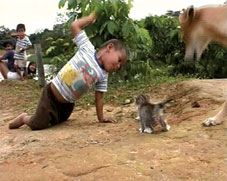
Cecilia Barriga
El origen de la violencia
Experimental video | dv | color | 1:0 | Spain | 2004
A little boy who is playing with a cute little cat, suddenly transforms his pleasure for the game into an uncontrolled act of hate. This one-minute video makes us reflect upon the origin of violence.
Cecilia Barriga was born in Chile. In 1977, she moved to Madrid, Spain. For the last 20 years, she has worked in different visual formats, such as film, video art, documentary, and feature film. Her most important works are: in 1991, "Meeting two queens", a master experimetal piece shown in MOMA, New York, Whitney Museum, Reina Sofia, Guggenheim Museum, and also in many universities around the world; and in 2000, "Time's up!", a feature film with commercial releases in Paris, Madrid, and many festivals, including San Sebastian International Film festival. Among her recent works are "El camino de Moises" (2004), a documentary which was a remarkable success on Spanish Television; "The origin of violence" (2006), was shown in the most important art museums in Spain.
Daniel Barroca
Catalogue : 2006Verdun | Experimental video | dv | black and white | 9:0 | Portugal | 2003

Daniel Barroca
Verdun
Experimental video | dv | black and white | 9:0 | Portugal | 2003
Verdun is a video made of fragments of images from the 1st World War. Is disturbing the silence of empty landscapes. It?s as a narrative of the emptiness after the destruction and of what?s left of absent people. It?s about the experience of loosing visibility and finding a new one in the loss, and in what rests in that loss.
Daniel Barroca was born at Lisbon in 1976. Studied Visual Arts at the School of Art and Design of Caldas da Rainha in Portugal from 1996 to 2001 and in Ar.Co in 2002. Won the Prize for the Young Creation in Visual Arts 2003-04 of the Union Latine. During the last trimester of 2004, lived and worked at the Spanish Academy in Rome. In the last years participated in several exhibitions and video festivals in Portugal, Italy, France and Norway.
Daniel Barrow
Catalogue : 2007A miracle | Animation | dv | color | 2:50 | Canada | 2004

Daniel Barrow
A miracle
Animation | dv | color | 2:50 | Canada | 2004
"A Miracle" is a film created in collaboration with the Toronto-based band, The Hidden Cameras, which demonstrates the artist's "live animation" techniques. The video features a young boy lying in bed, using the light of the moon to make shadow puppets on his bedroom walls. While experimenting with forms, he summons the spirit of a huge, fruity, bird-like creature with the profile of an owl, and the feathers of an ostrich. The creature shares a brief, romantic exchange with the boy before swallowing him whole, and then regurgitating, twisting and compressing his indigestible parts into a gizzard-shaped ball. In the end, the owl flies out the window, leaving the boy standing naked and cold in his room. The boy ultimately finds resolve by creating a gliding, self-representational plane, symbolically reuniting with the owl.
Daniel Barrow is a Winnipeg-based media artist, working in performance, video, and installation. He has exhibited widely in Canada and abroad. Recently, Barrow has exhibited at The Museum of Contemporary Art (Los Angeles), New Langton Arts(San Francisco), and The Contemporary Art Gallery (Vancouver). Since 1993, Barrow has used an overhead projector to relay ideas and short narratives. Specifically, he creates and adapts comic book narratives to a "manual" form of animation by projecting, layering, and manipulating drawings on mylar transparencies. Barrow variously refers to this practice as "graphic performance, live illustration, or manual animation".
Daniel Barrow
Catalogue : 2008Artist Statement | Animation | 35mm | color | 5:0 | Canada | 2007

Daniel Barrow
Artist Statement
Animation | 35mm | color | 5:0 | Canada | 2007
Using 1988 Amiga software (a veritable antique, by technological standards), Barrow uses a computer mouse to illustrate and animate his ?gratuitously honest? personal manifesto. Artist Statement is a video Barrow created to describe, but also to parody, his personal approach to art making. It is also representative of his recurrent themes, methods and preoccupation with obsolete technologies.
Daniel Barrow is a Winnipeg-based media artist, working in performance, video and installation. He has exhibited widely in Canada and abroad. Recently, Barrow has exhibited at The Museum of Contemporary Art (LA), New Langton Arts (San Francisco), and The Contemporary Art Gallery (Vancouver). Since 1993, Barrow has used an overhead projector to relay ideas and short narratives. Specifically, he creates and adapts comic book narratives to a "manual" form of animation by projecting, layering and manipulating drawings on mylar transparencies. Barrow variously refers to this practice as "graphic performance, live illustration, or manual animation."
Catalogue : 2007A Miracle | Animation | dv | color | 2:50 | Canada | 2005

Daniel Barrow
A Miracle
Animation | dv | color | 2:50 | Canada | 2005
"A Miracle" is a film created in collaboration with the Toronto-based band, 'The Hidden Cameras', that demonstrates the artist's "live animation" techniques. The video features a young boy lying in bed, using the light of the moon to make shadow puppets on his bedroom walls. While experimenting with forms, he summons the spirit of a huge, fruity, bird-like creature with the profile of an owl, and the feathers of an ostrich. The creature shares a brief, romantic exchange with the boy before swallowing him whole, and then regurgitating, twisting, and compressing his indigestible parts into a gizzard-shaped ball. In the end, the owl flies out the window, leaving the boy standing naked and cold in his room. The boy ultimately finds resolve by creating a gliding, self-representational plane, symbolically reuniting with the owl.
Daniel Barrow is a Winnipeg-based media artist, working in performance, video, and installation. He has exhibited widely in Canada and abroad. Recently, Barrow exhibited at The Museum of Contemporary Art (Los Angeles), New Langton Arts (San Francisco), and The Contemporary Art Gallery (Vancouver). Since 1993, Barrow has used an overhead projector to relay ideas and short narratives. Specifically, he creates and adapts comic book narratives to a "manual" form of animation by projecting, layering, and manipulating drawings on mylar transparencies. Barrow variously refers to this practice as "graphic performance, live illustration, or manual animation."
Anne Maree Barry
Catalogue : 2014Missing Green | Documentary | hdcam | color | 13:47 | Ireland | 2013
Anne Maree Barry
Missing Green
Documentary | hdcam | color | 13:47 | Ireland | 2013
Missing Green (2013) is a poetic journey through Cork Street, Dublin, Ireland. Two parallel stories inter mesh to create one underlying narrative.
Anne Maree Barry is a film artist based in Dublin. Barry?s experimental short films have screened internationally and her work has also been installed in a gallery context at The LAB, Dublin and the Tampere Art Museum, Finland. Missing Green, her most recent short film, was selected for the Stranger Than Fiction Documentary Festival and Indie Cork.An in-depth interview concerning her research methodologies and practice featured in Film Ireland last year.
Orla Barry
Yael Bartana
Catalogue : 2006By the river (angel camp part I) | Fiction | dv | color | 17:0 | Switzerland | 2004

Yael Bartana
By the river (angel camp part I)
Fiction | dv | color | 17:0 | Switzerland | 2004
Yael Bartana
Yael Bartana
Catalogue : 2007You Could Be Lucky | Experimental video | dv | color | 8:0 | Netherlands, United Kingdom | 2004

Yael Bartana
You Could Be Lucky
Experimental video | dv | color | 8:0 | Netherlands, United Kingdom | 2004
Oliver Cromwell's republican government in Britain saw an era of social austerity in which gambling and drinking were punishable crimes. After Cromwell's death, England once again became a monarchy. In 1660 Charles II took the throne, the forbidding laws were annulled and the tradition of the "Grand National" became well established as a social and cultural activity which is associated with the king who is known for his fondness of horses. The "Grand National"- one of the biggest race courses in Britain ? is a site at which cultural heritage, history and contemporary British society meet. Since the days of Charles II it hosts the peak of the social season. It is a glamorous event that attracts thousands every year, including members of the Royal Family. Bartana arrives at this social event in order to focus on the audience. In her previous work Bartana focused on rituals, memorials, and bestowing of social ceremonies that are part of Israeli society. In doing so, she documented events that involved issues of local, national, public, and personal identity. The primary aim of civilian rituals is the consolidation of a distinct local collective identity and intensification of the feeling of belonging of the individual. As time passes, the gesture alone remains in its updated form, but is occasionally empty. The original meaning of the ceremony is flattened, and what remains is a symbol and a mere reminder of what was before. In the "Grand National", commissioned by the Liverpool Biennial, Bartana investigates the socialization rituals that take place around the race course and examines the tension that is created between the site, the past culture, and today's society. Among others, Bartana chooses to focus on an event that is considered by many as the highlight of the happening ? Ladies Day - an ostentatious show of fashion and high heels, an extroverted exhibition of colour and stereotypical femininity.
Yael Bartana was born in 1970 in Kfar-Yehozkel, Israel. She has a BFA from the Bezalel Academy of Art and Design in Jerusalem, an MFA from the New York School of Visual Arts and participated in the Rijksakademie artist-in-residence program from 2000-2001. She has had solo exhibitions in many countries, including Germany, Israel, Australia, and Japan, and has won various prizes such as the Anselm Kiefer Prize in 2003 and the Dorothea von Stetten-Kunstpreis in 2005. Her work focuses mainly on the relationship between ritual and identity in Israeli society, looking at the practices that constitute identity, especially in its relation with traditional and contemporary notions of gender, place, and ethnicity. In most of the pieces Bartana uses documentary footage shot in public or semi-public spaces at collective events that contribute to identity formation, such as shooting drills for trainee female soldiers or the carnivalesque festivities of the Jewish holiday 'Purim'. Bartana currently lives and works in Amsterdam.
Igor Baskin
Kita Bauchet
Catalogue : 2023Les Gestes de Saint-Louis | Experimental doc. | 4k | color | 32:0 | Belgium, Senegal | 2022
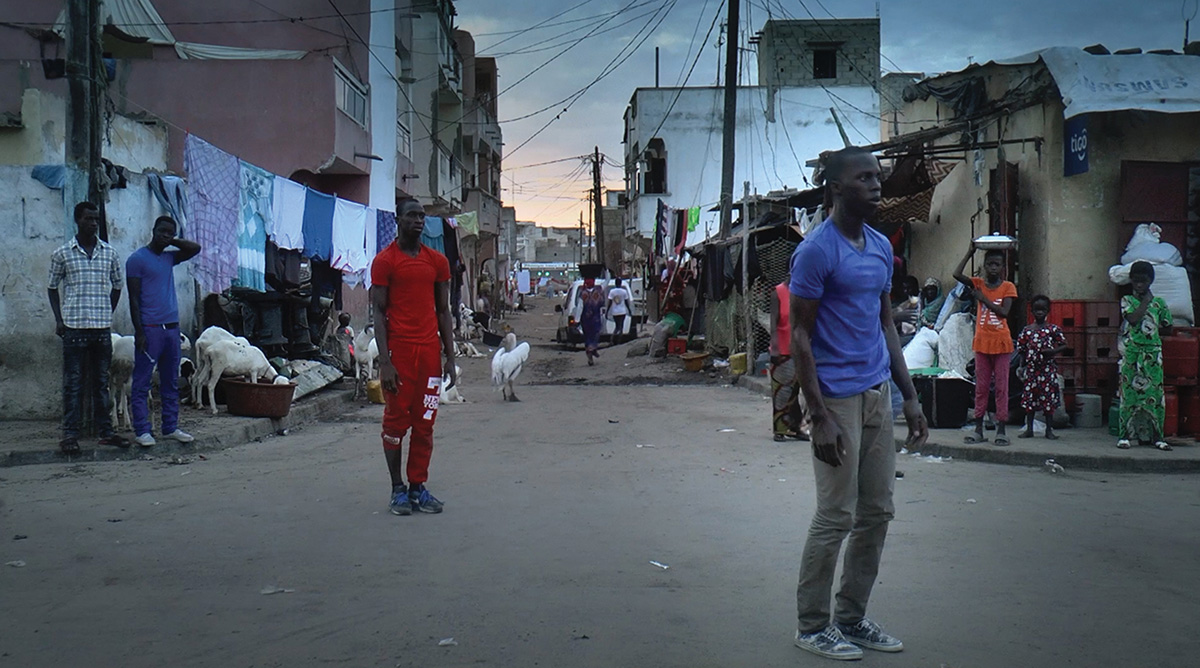
Kita Bauchet
Les Gestes de Saint-Louis
Experimental doc. | 4k | color | 32:0 | Belgium, Senegal | 2022
The result of a collaboration between the Senegalese contemporary dance company Diagn'art and the Belgian and Swiss artists Kita Bauchet and Stéphanie Pfister, "Saint-Louis on the move" presents a subjective sketch of the city and the rythme of its daily life. An exploration of Saint-Louis through several choreographies performed by 2 dancers and 2 cameras, on Siegfried Canto’s music that highlight the cities energy and the fierce creativity of its youth.
A graduate of INSAS, Kita Bauchet is a Belgian filmmaker. After several short fiction films, Violette et Framboise, Le temps d'un soufflé, Violette au Travail, in 2009 she directed La Fabrique de Panique, a feature-length documentary on the Belgian animated film "Panique au village" by Vincent Patar and Stéphane Aubier, will follow in 2016 Une vie contre l'oubli on the work of director André Dartevelle. In 2018, she created Bains Publics, which opened the doors to the "Bains du Centre" in the heart of a popular district of Brussels. The film received the France Télévisions prize for best documentary at the International Festival of Women's Films in Créteil as well as at the Brussels in Love festival and a special mention from the jury at the "Signes de vie Clermont-Ferrand" festival.
Eric Baudelaire
Catalogue : 2011[SIC] | Experimental video | dv | color | 15:0 | France | 2009
Eric Baudelaire
[SIC]
Experimental video | dv | color | 15:0 | France | 2009
In a Kyoto bookstore, an employee receives a parcel of new books. She methodically leafs through them, scratching the surface of certain pages with a blade in an extrapolation of the use of bokashi, a Japanese practice of self-censorship wherein obscenity is defined as ?that which unnecessarily excites or stimulates sexual desire.? In a poetic of the absurd, the film extends the bokashi gesture beyond the question of desire, in a ritual that doubles as a meditation on what an image does, or can do.
Eric Baudelaire, born in Salt Lake City in 1973, lives and works in Paris. Working in video, photography, printmaking and installation, Baudelaire is interested in the relationship between images and events, documents and narratives. Recalling factographic practices, his work can involve elaborate staged situations that appear to be real, but are somewhat off-kilter, placing the viewer in a situation of questioning the modes of production and consumption of images, political and social constructs and their modes of representation. He also uses simple techniques of assemblage, sampling and mechanical reproduction, applied to real documents, to playfully extract fictive narratives or new formal vocabularies. He has had solo exhibitions at Elizabeth Dee gallery, New York, Galeria Juana de Aizpuru, Madrid, and in Belgium at the Galerie Greta Meert and the Musée de la Photographie, Charleroi. His work is present in several public collections, including the Whitney Museum of American Art, the Centre Pompidou, the Fond National d`Art Contemporain, and the FRAC Auvergne.